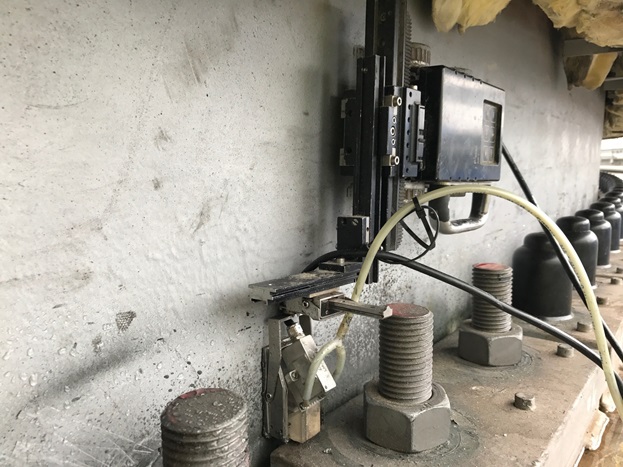A Thorough Summary of Storage Tank Welding Evaluation Criteria and Methodologies for Improved Weld Top Quality and Efficiency
The importance of welding inspection requirements in the manufacturing of storage tanks can not be overstated, as they work as the backbone for making sure weld integrity and operational reliability. Different inspection methods, including visual assessments and advanced non-destructive testing methods, are critical in determining prospective problems that can jeopardize performance. Adhering to governing criteria not only enhances weld high quality however also mitigates the risk of expensive failings. As we discover the nuances of these methods, it ends up being vital to take into consideration exactly how a methodical strategy can revolutionize current methods and bring about significant enhancements in results.
Value of Welding Assessment Criteria

Welding evaluation criteria include a variety of standards, including material requirements, welding treatments, and qualifications of employees associated with the welding procedure. By implementing these requirements, organizations can systematically determine and correct prospective flaws, thus reducing the possibility of pricey repair services or catastrophic failures. Moreover, rigorous evaluation practices foster a culture of accountability and accuracy, motivating welders to keep high levels of craftsmanship.

Usual Welding Evaluation Techniques


Ultrasonic Testing (UT) is an additional prevalent method, utilizing high-frequency acoustic waves to identify interior defects that may not show up on the surface. This technique is specifically effective for identifying gaps or incorporations within the weld steel. Magnetic Particle Checking (MT) is likewise commonly utilized, specifically for ferromagnetic materials, as it reveals surface and near-surface defects via the application of electromagnetic fields and ferrous bits.
Furthermore, Liquid Penetrant Screening (PT) identifies surface-breaking issues by using a penetrant to the weld and then using a programmer to extract the penetrant. Each of these methods contributes to a detailed assessment strategy, guaranteeing that welds meet the stringent quality criteria needed in storage tank construction.
Governing Standards and Compliance
Governing standards and conformity are crucial components in making certain the safety and reliability of welded structures in container building and construction - Tank Welding Inspection. These standards serve to develop minimum needs for material residential or commercial properties, welding treatments, and evaluation practices, thereby decreasing the danger of structural failures and enhancing general performance
Trick companies, such as the American Society of Mechanical Engineers (ASME) and the American Welding Society (AWS), supply standards that are commonly taken on in the sector. Compliance with these criteria not only makes sure adherence to finest techniques but additionally satisfies legal and legal obligations, guarding the interests of stakeholders.
Regulative bodies typically mandate adherence to specific codes, such as ASME Code Area IX for welding certifications and API 650 for welded tanks. These codes lay out requirements for welding strategies, certifications of employees, and testing methods to confirm weld stability.
Regular audits and examinations are critical to maintaining conformity, as they help recognize inconsistencies from developed criteria. Non-compliance can lead to substantial fines, job hold-ups, and safety dangers. Thus, a robust go to my site understanding of governing criteria and a commitment to compliance are vital in attaining high-grade and resilient bonded storage tank frameworks.
Non-Destructive Evaluating Approaches
Just how can the stability of welded frameworks be assured without creating damage? Non-destructive testing (NDT) methods supply a robust option, making it possible for inspectors to evaluate weld quality without jeopardizing the product - Tank Welding Inspection. Amongst one of the most usual NDT methods are ultrasonic screening (UT), radiographic screening (RT), magnetic bit testing (MT), and dye penetrant screening (PT)
Radiographic testing includes passing X-rays or gamma rays through the weld, developing images that disclose architectural problems such as splits or spaces. This approach is vital for evaluating the honesty of intricate welds.
Magnetic particle testing is suited for ferromagnetic materials, where electromagnetic fields reveal surface area and near-surface discontinuities. Dye penetrant screening uses a fluid color to highlight surface-breaking defects, making it an efficient method for non-porous products.
Each of these NDT methods has unique advantages, permitting comprehensive analyses customized to certain materials and welding procedures. By carrying out these methods, industries can ensure the integrity and safety of welded frameworks, eventually enhancing overall efficiency.
Enhancing Weld Quality With Inspection
Efficient examination plays a crucial duty in improving weld top quality, serving as a crucial checkpoint in the site here fabrication process. By determining prospective issues early, inspections mitigate the risk of endangered structural honesty and ensure reference conformity with industry requirements. Utilizing a combination of visual exams, non-destructive screening (NDT) approaches, and mechanical assessments, inspectors can find concerns such as porosity, splits, and insufficient fusion.
Applying a robust assessment protocol not only improves the overall quality of welds however also fosters a society of accountability among welders and makers. Regular training and accreditation of examination personnel ensure that they are outfitted with the essential skills to acknowledge and attend to potential problems successfully. This aggressive approach reduces rework and associated prices, ultimately adding to project effectiveness.
Moreover, comprehensive documentation of evaluation findings offers beneficial insights into recurring problems, promoting continual improvement in welding methods. By leveraging sophisticated technologies, such as automated ultrasonic screening or electronic radiography, weld quality can be enhanced via much more accurate examinations. In final thought, an extensive inspection procedure is important in attaining high-grade welds, making certain security, integrity, and long life in tank construction.
Conclusion
In final thought, the application of extensive tank welding examination standards and methodologies is necessary for making sure weld honesty and performance. By making use of a combination of visual assessments, non-destructive screening techniques, and adherence to regulatory requirements, organizations can properly determine and reduce prospective issues.
Comments on “Why Regular Tank Welding Inspection is Crucial for Architectural Integrity”